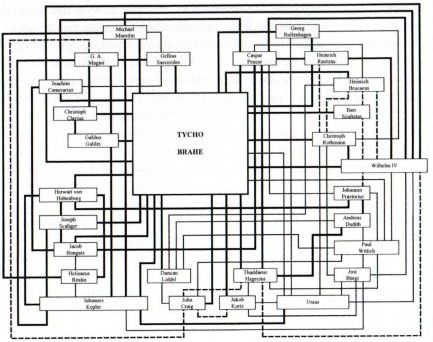As regular Cipher Mysteries readers will know, I’ve recently become particularly interested in early modern correspondence as a way of peering into the dispersed scientific networks that began to develop and extend during the late sixteenth century (the so-called “invisible colleges”), very much along the lines described for Tycho Brahe’s familia by Adam Mosley in his recent book Bearing the Heavens.
However, one key problem is that there’s an awkward quiet between the (early sixteenth century) Republic of Letters and the (mid-to-late seventeenth century) Scientific Revolution correspondence where relatively few letter-writers really stand out – Tycho Brahe (of course), Marin Mersenne, Tadeas Hajek, Fabri de Peiresc.
Incidentally, Peiresc (“the Prince of Erudition”) left more than 10,000 letters, of which only about 3,200 have been published. Fascinatingly, the Annales historian Robert Mandrou tried several decades ago to use this to chart the “geography of ideas” implicit in Peiresc’s correspondence network, through what Robert Hatch calls “simple yet eloquent maps”. There’s more on how Peiresc’s set of letters was split into two here.
Also, QMC has an initiative on this topic called the Centre for Editing Lives and Letters (“CELL”), with subprojects on the correspondence of Francis Bacon, Thomas Bodley (as in the Bodleian Library, of course), and the relatively little known Elizabethan intelligencer/diplomat William Herle. One recent CELL, errrm, inmate called Samuli Kaislaniemi has a nice set of links on the topic, including one to a National Archive wiki!
But I’m digressing (arguably even more than normal).
I recently found another Renaissance letter collection which I had been unaware of: the Clusius Correspondence Project at Leiden University, which holds most of botanist Carolus Clusius’ letters. Intriguingly, this was particularly focused on plants and gardening, and so was the kind of place where a mention of everyone’s favourite enciphered-early-modern-herbal manuscript might plausibly appear – and so I emailed Florike Egmond whether she had come across anything remotely like the VMs mentioned in Clusius’ letters.
Sadly, her answer was no: in fact, she pointed out that the letters contain “almost no references at all to herbals / manuscripts about plants“. Having said that, she also noted that a reference might yet surface in some of the letters with Clusius’ book-focused Italian correspondent Pinelli, or (rather less probably) with Hugo Blotius. All the same, as they say in showbiz, “‘No’ only means ‘no today’“.
Hmmm… as a final aside for the day, I really wish there was some kind of “meta-list” of early modern correspondence projects out there, one that listed started, planned or proposed, started-but-abandoned and as-yet-unstarted correspondence projects – a kind of correspondence project project, if you like.

